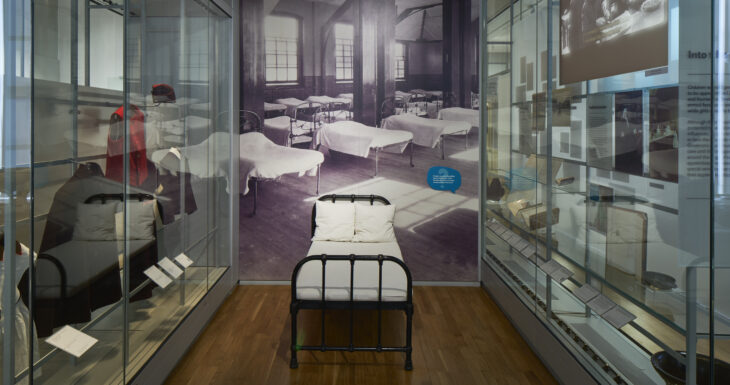The Foundling Museum
Telling the story of a ground-breaking eighteenth-century institution, housed in historic interiors on its original site.
40 Brunswick Square, London WC1N 1AZ

The Foundling Museum opened in 2004, fifty years after the Foundling Hospital placed its last pupil in foster care.
Over two hundred years before that, in 1739, Thomas Coram (1668-1751) had established the hospital to care for babies at risk of abandonment. Coram, a philanthropist, campaigned for seventeen years before he received a Royal Charter from King George II to found it. He was appalled by the conditions children faced in London: though the city was a global powerhouse of industry and wealth, it was also polluted and disease-ridden. Child mortality rates soared. Each year, some one thousand babies were abandoned by parents experiencing extreme poverty or other terrible maladies
The Foundling Hospital, which continues today as the children’s charity Coram, was designed to care for and educate England’s most vulnerable citizens. The artist William Hogarth and the composer George Frederic Handel played a big part in realising Coram’s vision. Together, they transformed the Hospital into the UK’s first public art gallery, and one of London’s most fashionable venues. Hogarth encouraged leading artists to donate their work and Handel held benefit concerts of Messiah in the Hospital’s chapel. It was the place to be seen and to be seen helping. During its two centuries in operation, the Foundling Hospital looked after a remarkable 25,000 children.
Today, our museum building is situated in the grounds of the old hospital at 40 Brunswick Square in Bloomsbury. It was constructed in in the 1930s, and incorporates many architectural features from the original eighteenth-century hospital building.
